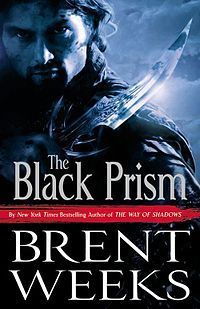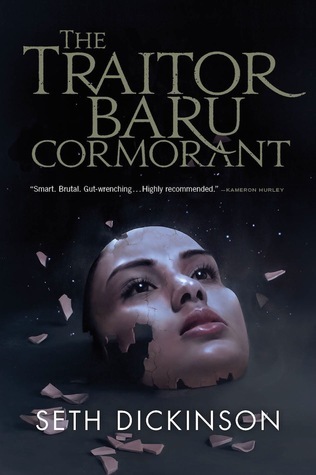
Scarlet Secrets:
Unlocking the Potential of Blood Magic Systems
In this blog, we discuss the mystical blood magic system utilizing the essence of life contained in blood for spells and rituals. Depending on how it is displayed in the novel, it can fall under either rule-based or soft magic. Additionally, blood magic systems can also contain symbolic elements, especially if they are used to explore themes related to sacrifice, power, or the interconnectedness of life and death.
- Rule-based – a magic system that follows specific rules, laws, or principles that govern its use and behavior. Think of novels like The Name of the Wind by Patrick Rothfuss.
- Soft Magic – a magic system that lacks clearly defined rules or limitations governing the use of magic. Think of novels like The Hobbit by J.R.R. Tolkien or The Night Circus by Erin Morgenstern.
- Symbolic – a magic system based on symbolic gestures, objects, or rituals that represent larger concepts or ideas. Think of novels like The Bone Season by Samantha Shannon or The Ten Thousand Doors of January by Alix E. Harrow
Read more about the different types of magic systems here.
In a rule-based blood magic system the use follows clear rules governing how the magic works, what it can accomplish, and what consequences arise from its use. For example, blood magic might require specific rituals, ingredients, or sacrifices to produce desired effects. The Bone Season by Samantha Shannon, the first book in a series set in a dystopian future has clairvoyant abilities outlawed. The protagonist, Paige Mahoney, is a powerful clairvoyant who can break into the minds of others. Blood is central to the magic system in this series, as clairvoyants use their blood to access the spirit realm and perform various supernatural feats. The Black Prism by Brent Weeks uses Blood magic in the form of blood mirrors, which allow communication and manipulation of light magic. The Fifth Season by N.K. Jemisin provides individuals known as orogenes who have the ability to manipulate the earth’s energy, but they are often feared and persecuted. Blood plays a crucial role in the magic of orogeny, as orogenes use their own blood or the blood of others to access their powers.
In The Poppy War by R.F. Kuang, the main character, Rin’s use of blood magic aligns with the softer, more ambiguous approach often found in soft magic systems. Rin’s ability to wield blood magic is portrayed as an intuitive connection to ancient shamanic powers rather than a rigidly defined set of rules or spells. She discovers her abilities through instinct and trial and error rather than formal training or instruction. This intuitive aspect adds to the mystical and mysterious nature of her magic. Rin’s blood magic is portrayed as unpredictable and potentially dangerous, reflecting the inherent risks of wielding such power. Her use of blood magic can have unintended consequences, both for herself and those around her, adding an element of tension and uncertainty to the narrative. Rin’s blood magic is deeply rooted in the cultural and historical context of the story, drawing on traditions of shamanism and folklore. This cultural richness adds depth and authenticity to Rin’s magic, highlighting its connection to the world around her.
Blood is often associated with sacrifice and loss, making it a potent symbol in blood magic systems. Characters may willingly offer their blood as a sacrifice to achieve their goals or protect their loved ones, highlighting themes of selflessness, duty, and devotion. Conversely, the use of blood magic may come at a cost, requiring characters to sacrifice something for themselves or others, emphasizing the moral ambiguity and consequences of wielding such power. Blood magic used in The Poppy War often carries symbolic significance, representing the darker aspects of power, sacrifice, and the consequences of violence. Blood is also a symbol of life and vitality, representing the essence of existence and the interconnectedness of all living beings. Manipulation of blood can symbolize the manipulation of life force or the balance between life and death. Characters who wield blood magic may be seen as wielding the power of life itself, exploring themes of creation, regeneration, and mortality. Thalric, a character from The Traitor Baru Cormorant by Seth Dickinson wields blood magic as part of his role in a complex political plot to overthrow an oppressive empire.
Often writers use blood magic systems to immerse the reader by giving detailed descriptions of blood magic rituals, spells, and their effects, painting a vivid picture of the sights, sounds, and sensations associated with blood magic, evoking a sense of wonder and intrigue, drawing readers deeper into the narrative. By exploring the characters’ thoughts, emotions, and reactions to blood magic, writers can provide insight into its significance within the story’s world and its impact on the characters’ lives. Writers can explore how different societies view and interact with blood magic, incorporating elements of folklore, mythology, and religious beliefs to add depth and authenticity to the magic system. Writers depict the ethical dilemmas, personal sacrifices, and moral repercussions faced by characters who practice or oppose blood magic, creating tension and suspense that keep readers engaged. Using blood magic to explore broader themes and motifs can deepen a reader’s immersion by resonating on a deeper level using the magic as a metaphor for power, control, identity, or the human condition, inviting readers to reflect on its symbolic significance and relevance to their own lives.
In conclusion, Blood Magic systems employ visceral powers of sacrifice and the mysteries of life and death with power and control. Blood magic serves as a potent tool for writers to explore the depths of human nature and the complexities of their imagined worlds. Whether depicted as a rule-based system with clear limitations or as a softer, more ambiguous force, blood magic captivates readers with its evocative imagery, moral dilemmas, and profound thematic resonance. Its symbolic nature brings to the reader the grimoires of sacrifice and loss. However, it’s portrayed we know there will be power and wonder and a history of lore running in its veins.
Please read and review my serial publishing novel, Sparrow’s Legacy, on Kindle Vella. You can read the first three chapters free on Amazon by searching for “Sparrows Legacy Kindle Vella” or clicking here. Or you can find my debut SFF novel, the space opera Drayton’s Discoveries. For the love of all fantasy and SFF, please leave a review. Feedback is my sole sustenance for writing. Don’t let me starve. If you liked this blog, please be sure to sign up for future blogs on my site jlnichauthor.com
For those trying the writing game, I want to give a quick shout-out to PLOTTR software. I’ve found it has really improved my writing game and increased my efficiency tremendously. It is my new favorite writing aid. Use any of my affiliate links below and I might get a small commission. Thanks.
Check out my YouTube channel for PLOTTR videos @jlnichauthorsff
Joseph Michael’s Learn Scrivener Fast e-course
Please subscribe to my website if you want to be notified when I’ll be publishing or to get free samples of my work.
JL Nich, Science Fiction Fantasy Author


